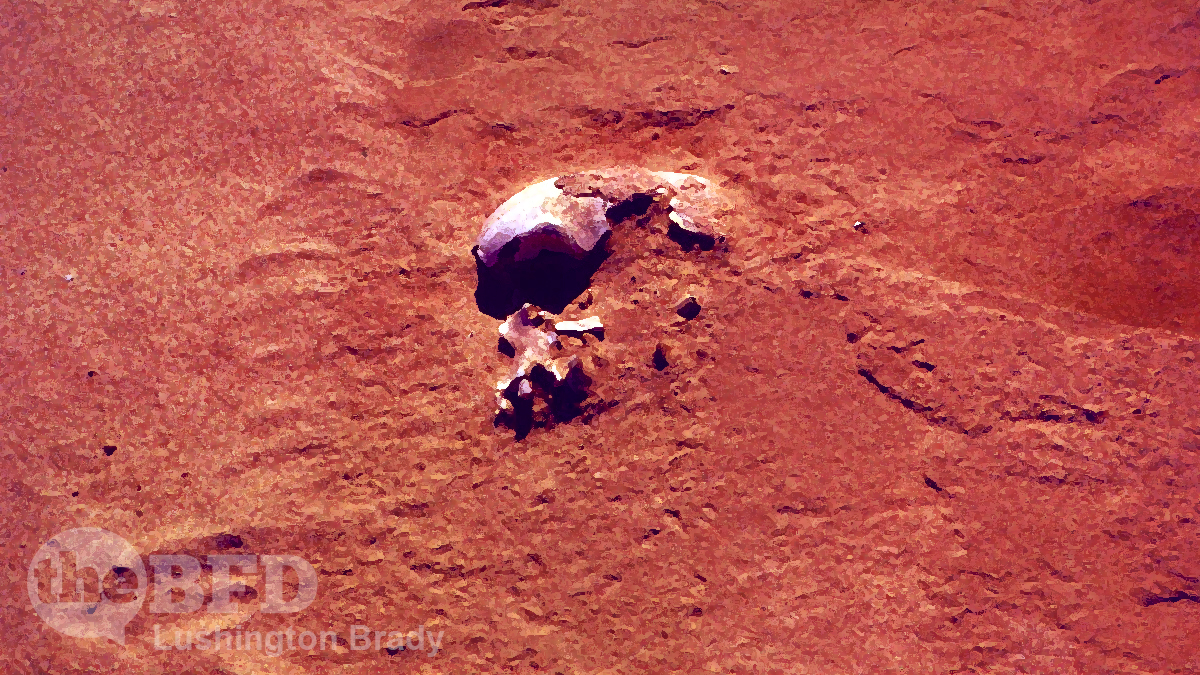OPINION
Science, no matter what the media and activists might screech at you, is never settled. In fact, it’s the essential nature of science that it must be subject to change. Often dramatic. Consider the paradigm shift of quantum physics in the early 20th century: suddenly a deterministic universe became chaotic; even causality could seemingly be turned on its head.
The science of modern human origins has seemed pretty settled for decades. Ever since the remarkable work of the Leakeys, the “Out of Africa” theory has ruled almost supreme. As has the idea that humanity emerged from a single, ancestral population.
But that theory is coming under multiple challenges.
For some time it was theorised that modern humans arose independently in two distinct regions: Africa and Asia. That was abandoned when it was deemed probably that “Peking Man” was merely a sub-species of H. Erectus, which evolved in Africa but became the first human species to disperse more widely across Eurasia.
But a new study suggests that, rather than a single ancestral population, modern humans descended from two distinct populations who lived apart in Africa for a million years before merging several hundred thousand years ago.
The global team of researchers from different institutions analysed the genomes of 290 living people and conducted large-scale simulations of human history feeding multiple scenarios of different populations existing in Africa to the software which could produce the diversity of DNA found in people living today.
The research indicated that multiple ancestral groups from across Africa contributed to the emergence of Homo sapiens in a patchwork manner, migrating from one region to another and mixing with one another over hundreds of thousands of years.
The team compared the DNA of African people in the study with that of a person from Britain and the genome of a 50,000-year-old Neanderthal found in Croatia, another close relative of ancient humans. They concluded that the ancestors of our species existed in two different population groups dubbed Stem1 and Stem2 by the team led by Dr Brenna Henn, a geneticist at the University of California, Davis.
It also found that everyone alive today can trace their ancestry to at least two distinct populations that were present in Africa dating back about a million years.
India Today
An even more startling study questions whether what became the human ancestral tree really originated in Africa. It claims, instead, that the ancestors of hominines – chimps, bonobos, gorillas, and humans – evolved in Europe instead.
The discovery of several hominine fossils in Europe and Anatolia (modern-day Turkey) has already led some researchers to argue that hominines first evolved in Europe. This view suggests that hominines later dispersed into Africa between 7 million and 9 million years ago.
This doesn’t mean that humans originated in Africa. Rather, the common ancestor of humans and our closest living relatives did so, before we humans came down from the hominine family tree.
“Since that divergence, most of human evolutionary history has occurred in Africa,” [Study co-senior author David Begun, a paleoanthropologist at the University of Toronto] told Live Science. “It is also most likely that the chimpanzee and human lineages diverged from each other in Africa.”
It seems that all the action of human origins is happening in Turkey. Sites like Karahan Tepe and Gobekli Tepe are rewriting everything we thought we knew about the Neolithic Revolution and the origins of human civilisation. An 8.7 million year old fossil, dubbed Anadoluvius turkae, from central Anatolia is challenging the assumptions of the evolution of apes and humans.
The fossil suggests that A. turkae likely weighed about 110 to 130 pounds (50 to 60 kilograms), or about the weight of a large male chimpanzee.
Based on the fossils of other animals found alongside it – such as giraffes, warthogs, rhinos, antelope, zebras, elephants, porcupines and hyenas – as well as other geological evidence, the researchers suggest that the newfound ape lived in a dry forest, more like where the early humans in Africa may have dwelled, rather than in the forest settings of modern great apes. A. turkae’s powerful jaws and large, thickly enameled teeth suggest that it may have dined on hard or tough foods such as roots, so A. turkae likely spent a great deal of time on the ground […]
In the new study, the scientists focused on a well-preserved partial skull uncovered at the site in 2015. This fossil includes most of the facial structure and the front part of the braincase, the area where the brain sat – features that helped the team calculate evolutionary relationships.
“I was able to reconstruct and see for the first time the face of an ancestor of ours no one had ever seen before,” Begun said.
The researchers suggest that A. turkae and other fossil apes from nearby areas, such as Ouranopithecus in Greece and Turkey and Graecopithecus in Bulgaria, formed a group of early hominines. This may, in turn, suggest that the earliest hominines arose in Europe and the eastern Mediterranean. Specifically, the team contends that ancient Balkan and Anatolian apes evolved from ancestors in Western and Central Europe.
Live Science
It’s notable that, modern academic sensibilities being what they are, the authors are at great pains to deny that this means that Eurasia had any real importance in human evolution.
Still, imagine how dull the world would be if science really was settled.

